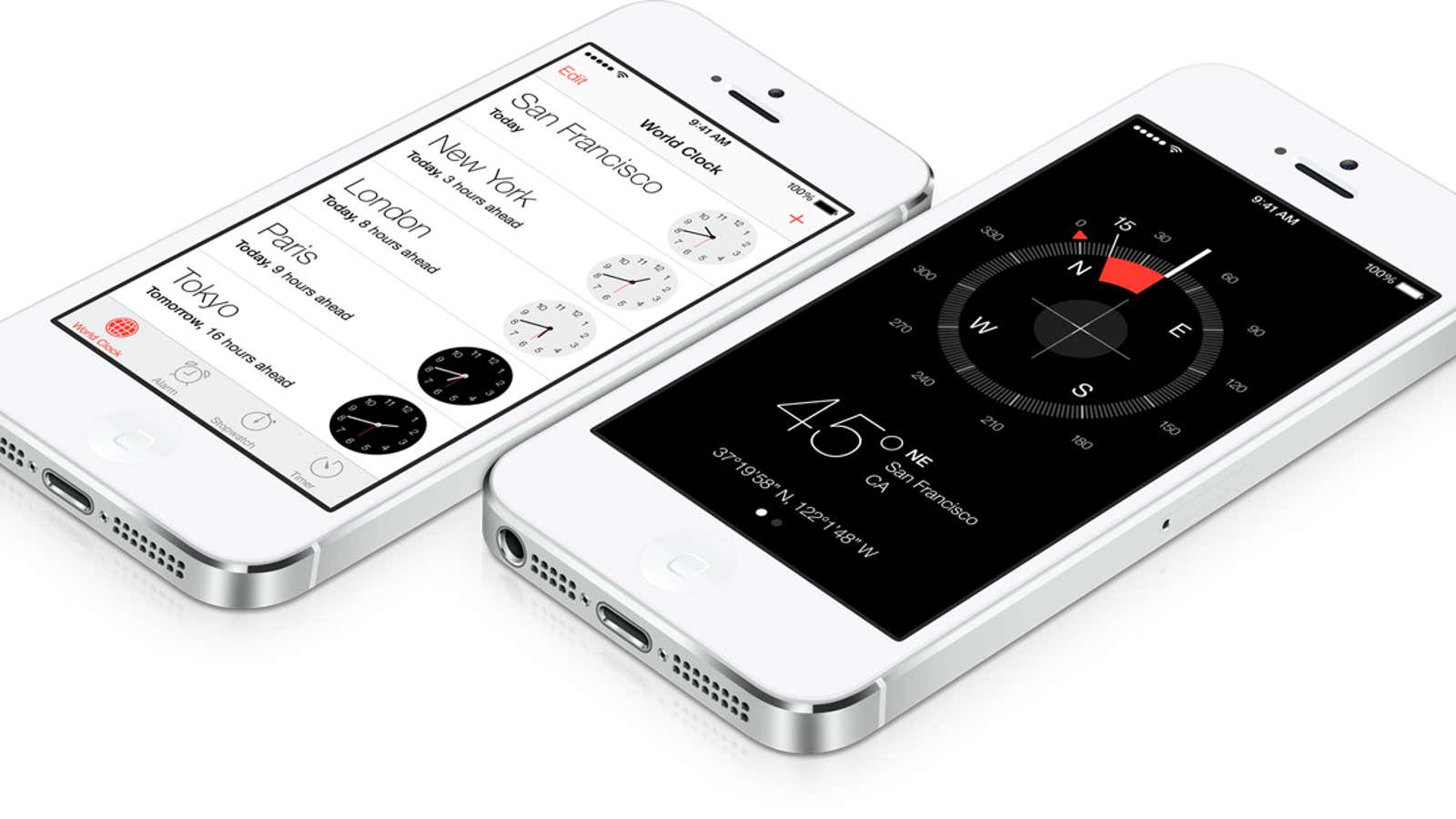Among the most subtle changes to Apple’s mobile operating system unveiled today is a switch from bars to dots to indicate the current signal strength on your iPhone. You can see it in the shots above, or here’s a close-up:

Pretty! And it’s of a piece with Apple’s fairly radical overhaul of iOS, which dispenses with skeuomorphic references—in this case, a physical meter—in favor of a “flatter” design. In a semiotics class, we’d say that iOS 7 emphasizes symbols over icons.
But don’t be fooled! The signal strength indicator may look different, but it’s just as bad at indicating how strong your signal is.
Signal strength on mobile phones is generally measured as a ratio of decibels to milliwatts, or dBm, in a range roughly between -113 dBm (a very weak signal) and -51 dBm (“Can you hear me now? Good”). You might think that range would be divided equally among the five bars—or, soon, dots—but no. On the iPhone, any reading above -76 dBm, or about 42% of the range, registers as five dots. The same sort of grade inflation is common on most Android phones, as well.
It actually used to be worse. The issue gained prominence in 2010, when the iPhone 4’s antenna was criticized for poor reception. Apple’s much-ridiculed response was to adjust how it measured the phone’s signal-strength to temper the grade inflation. Apple argued that “high bars were never real in the first place.” It also made the first three bars taller, presumably hoping they would seem less frustrating.
Changing how signal strength is measured or displayed won’t do anything to reduce the stress of a slow data connection or dropping a call. But dots are arguably a more honest representation than bars, which suggest that something is being reliably measured.
